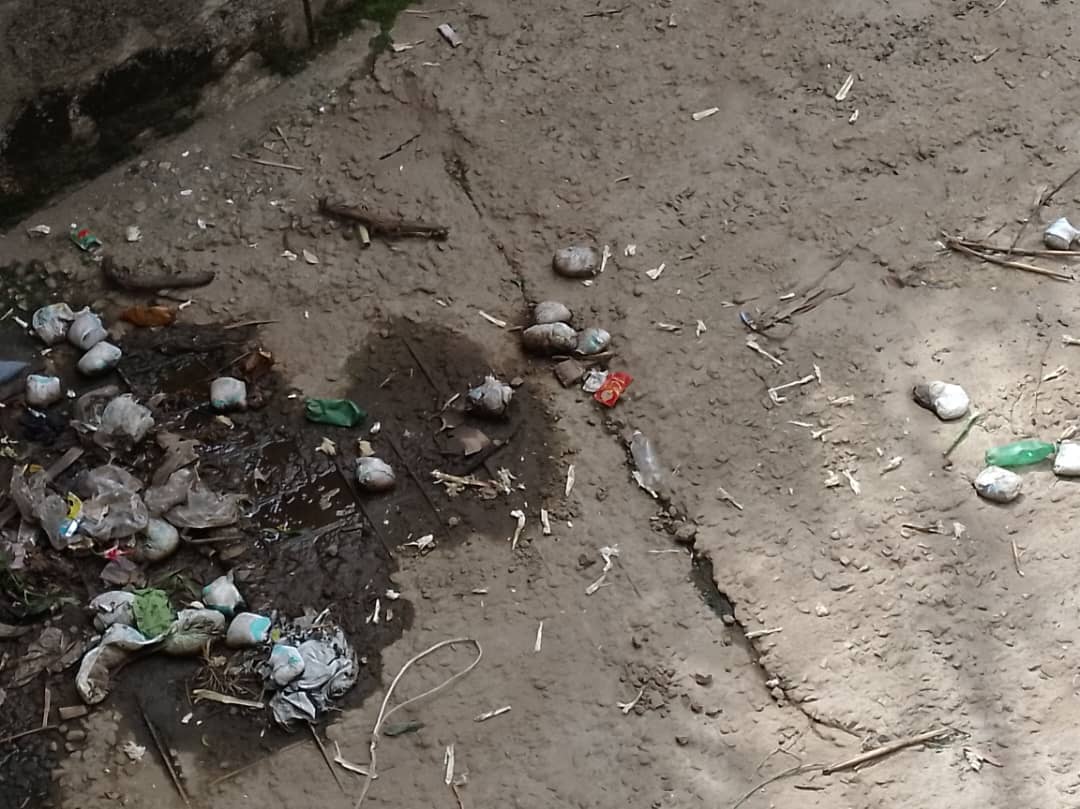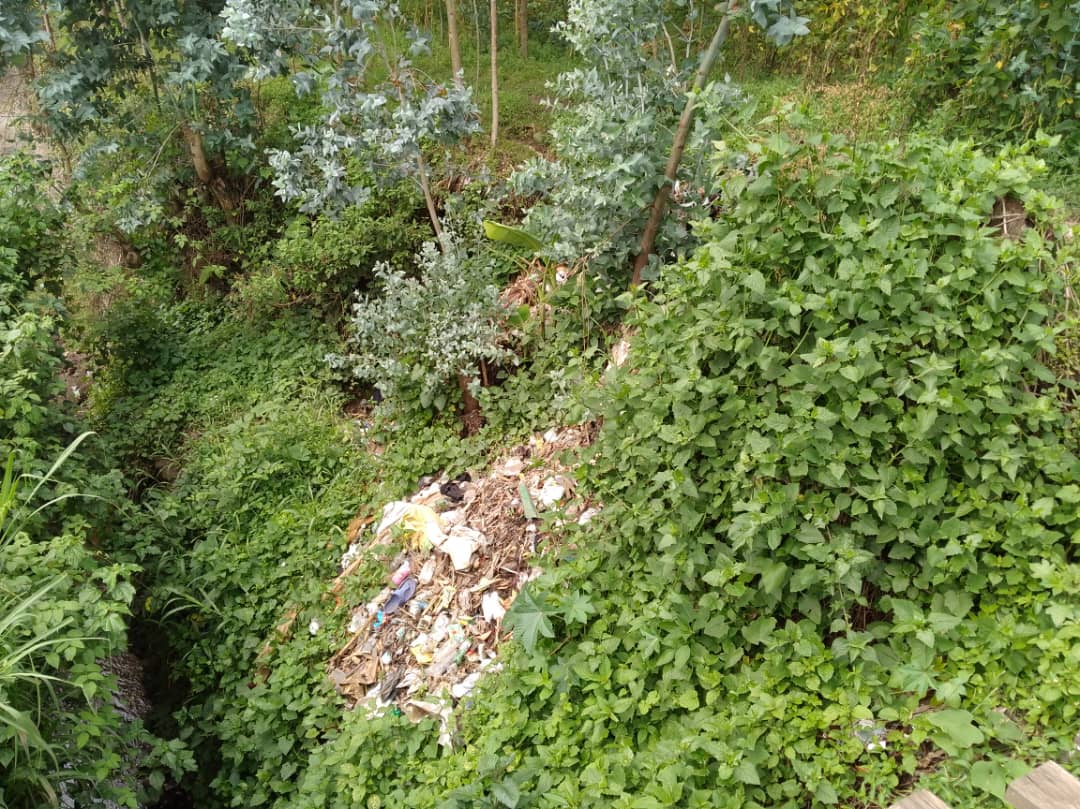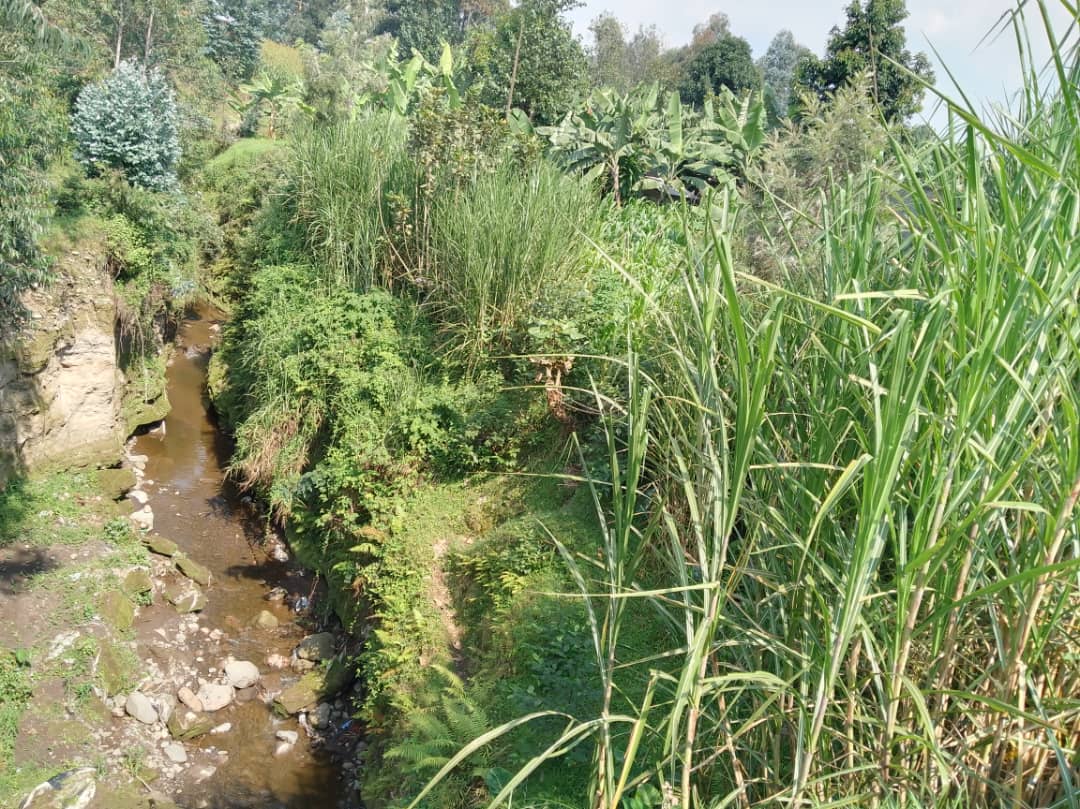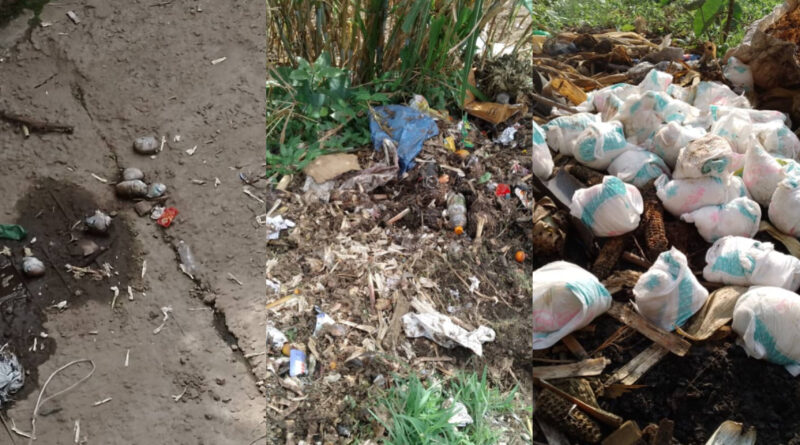Drainage channels turned into dumping sites: A source of poison for aquatic life
In various parts of Rwanda, drainage channels are used as water pathways, mostly for rainwater that falls in large quantities, helping to direct water to appropriate places such as rivers, streams, or farmlands.
These water channels are crucial for the safety of people living nearby and those involved in development activities like construction, farming, and livestock rearing. They help control water flow, preventing floods that can damage homes, carry away animals, crops, infrastructure, or even human lives.
However, some individuals fail to recognize the importance of these drainage channels. Instead of maintaining and protecting them, they turn them into dumping grounds for household waste especially non-biodegradable items such as used baby diapers (pampers), plastic bags, worn-out clothes, and food packaging. They often do this secretly at night or during rainfall, hoping the rain will wash the waste away.
Residents like Joseph Maniragaba and Thierry Niyomukiza from Musanze District told Greenafrica.rw that most people who dump waste in these channels do so at night or when it’s raining, disregarding the environmental consequences. This waste ends up in rivers and farms, affecting aquatic life, including fish like tilapia, which people consume.

“Sometimes during the day, you won’t see any waste in Rwebeya drainage channel. But when it rains, you find it clogged with pampers and all sorts of trash. It’s likely that some people avoid paying garbage collection fees by dumping their waste in these channels.”Maniragaba said:
“They think just because water passes through there, it will carry the waste away. But this causes blockages, and the diverted water floods their own homes. It’s a worrying trend because some people have normalized this behavior, even though we all know how harmful it is and are always being encouraged to maintain hygiene.”He added
His colleague Niyomukiza explained that this waste ends up polluting rivers where animals drink water and where aquatic life thrives.
“How can fish survive when surrounded by such waste? These drainage channels feed into rivers like Mukungwa, which are rich in biodiversity that contributes to our ecosystem. When polluted, the water becomes a source of diseases to both animals and humans.”
Marie Grace Wishavura, an environmental officer in Musanze District, emphasized that water resources must be protected and said that those polluting water bodies are punishable under environmental law.
“Water resources must be conserved to protect biodiversity. Pollutants like plastics and other waste materials cause significant harm to water bodies and aquatic life. The law punishes those who violate environmental standards, we are a law-abiding country, and local governments are tasked with enforcing these laws.”
Relevant story
Copy and pastee it to your browser https://www.greenafrica.rw/old-clothes-discarded-in-farms-harbor-chemicals-that-harm-the-environment/
She also mentioned the importance of public awareness campaigns that involve both citizens and local authorities, teaching them how to manage waste and avoid disposing of it in water channels, farms, or rivers. People should also understand how harmful plastic is not only to aquatic life but also to humans who consume water and food from those ecosystems.

Plastics and old clothes contain harmful chemicals that damage the environment, from water and plants to wildlife. These materials can take 200–500 years to decompose, releasing hazardous substances along the way ,including dyes and hard particles which can enter our bodies through water consumption.
Grace also highlighted another issue: people doing laundry in drainage channels, where water flows into rivers. She said soaps contain chemical products that are toxic to aquatic life.
“We advise people doing laundry for business or personal use to collect water and wash clothes at home. Soap contains substances that can harm people and aquatic life, possibly leading to waterborne diseases.”
She urged everyone to protect rivers and their banks, noting that the closer people get to these rivers, the more they damage water quality.
“That’s why the law establishes ‘Buffer Zones to protect water bodies. These must be respected and protected for the health of both humans and nature.”
The law outlines different buffer zone distances depending on the water body: 50 meters from lakes for agricultural activities, Up to 100 meters for livestock-related activities, 10 meters from large rivers, 5 meters from medium-sized rivers, 3 meters from small streams

Beatha Akimpaye, Director of Environmental Compliance at REMA (Rwanda Environment Management Authority), reiterated that dumping waste in rivers or drainage channels has serious consequences for humans, the environment, and agriculture.
“When waste is dumped in rivers or drainage systems, it kills aquatic life. Every creature plays a role in human survival from food security to clean air. Polluting rivers with plastics can lead to a cycle of disease, including long-term illnesses like cancer and epidemics. Awareness and law enforcement must go hand in hand.”
Drainage systems in Musanze mainly channel water from the volcanic mountains of Karisimbi and Muhabura into rivers like Mukungwa, which flows into Nyabarongo, then Akagera all of which host a rich diversity of aquatic life.

What Rwandan Environmental Law Says:
The Environment Law No. 48/2018 of August 13, 2018, Article 12, mandates the protection of water resources from pollution.
Under Chapter VI, Article 42, the law prohibits the following:
1. Dumping solid, liquid, or gaseous waste that pollutes rivers, wetlands, ponds, lakes, or their banks.
2. Degrading water quality (surface or underground).
3. Placing, discharging, or storing anything that may pollute water.
4. Conducting farming or livestock activities within 10 meters of rivers and protected areas.
6° Constructing livestock bridges, slaughterhouses, and livestock markets within a distance of sixty meters (60 m) from the banks of rivers and streams, and within two hundred meters (200 m) from the shores of lakes is prohibited.
7° Building in water sources, rivers, streams, and lakes or along their banks within ten meters (10 m) from streams and fifty meters (50 m) from lakes is also prohibited.
Article 49 of the same law outlines prohibited activities within these regulated distances, particularly in its points 1, 2, and 5:

It states that any person:
1° who constructs a livestock bridge, slaughterhouse, or livestock market within sixty meters (60 m) from riverbanks and two hundred meters (200 m) from lake shores;
2° who conducts farming or animal husbandry within ten meters (10 m) from rivers and streams or within fifty meters (50 m) from lake shores;
5° who dumps waste,whether solid, liquid, or gaseous—into a river, stream, lake, or along their banks;
shall be fined an administrative penalty of five hundred thousand Rwandan Francs (500,000 FRW) and required to remove their activities.
If the above-mentioned actions are committed by a person whose project has undergone an environmental impact assessment, they are also required to rehabilitate the damaged ecosystem and pay an administrative fine amounting to 2% of the project’s total cost.
As of now, Rwanda counts 861 rivers with a combined length of 6,462 km, all of which drain into two major river systems: the Nile and the Congo.
The Nile receives 67% of water from eastern Rwanda, while the Congo basin receives 33% from the western part of the country.
There are also 2,860 wetlands covering 278,536 hectares, and 101 lakes covering an area of 149,487 hectares.
There is currently no national report from institutions such as the Rwanda Housing Authority (RHA) or the Ministry of Infrastructure (MININFRA) that shows the exact number of drainage channels (runoff canals) across the country. However, in cities like Kigali, various Drainage Master Plans exist which include assessments and data on specific drainage channels in districts such as Gasabo, Kicukiro, and Nyarugenge.
These plans typically involve inventories of new drainage systems to be constructed or old ones needing repair but do not provide a national total.



Would you like to partner with us to promote your initiatives?
Call us at: +250784581663
Email: Greenafrica393@gmail.com and juvekwizera@gmail.com

